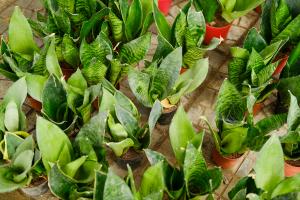Is Purified Water Good for Indoor Plants?
Indoor plants are a popular and beautiful addition to any home, and many people enjoy caring for various types of greenery in their living spaces. One aspect of plant care that often causes confusion is the choice of watering method; should you use tap water, distilled water, or purified water? In this article, we will discuss whether purified water is good for indoor plants.
What is Purified Water?
Purified water is water that has undergone a filtration process to remove contaminants and impurities. This can be achieved through a variety of different methods, including reverse osmosis, distillation, or deionization. The resulting water is typically free from minerals, chemicals, and other substances that may affect the taste, smell, or appearance of the water.
Benefits of Using Purified Water for Indoor Plants
There are several benefits to using purified water for your indoor plants. Firstly, purified water is free from minerals and other substances that may cause buildup in the soil over time. This can prevent soil from becoming compacted and allow for better root growth and nutrient absorption. Secondly, purified water can help to prevent the development of mold and other harmful bacteria in the soil, which can damage your plants and even cause illness in some cases.
Another benefit of using purified water for your indoor plants is that it can help to maintain the pH balance of the soil. Tap water may contain high levels of minerals such as calcium and magnesium, which can raise the pH levels of the soil over time. This can create problems for plants that require a more acidic environment, such as ferns or orchids. Purified water can help to regulate pH levels and ensure that your plants are getting the nutrients they need.
Drawbacks of Using Purified Water for Indoor Plants
While there are many benefits to using purified water for your indoor plants, there are also some drawbacks to consider. Firstly, purified water can be more expensive than tap water, which can become a significant cost if you have many plants to water. Secondly, purified water may lack some of the nutrients that plants need to thrive, such as calcium, magnesium, and fluoride. These nutrients can be found in tap water but are typically removed during the purification process.
Another potential drawback of using purified water is that it may not be as environmentally friendly as tap water. The process of purifying water requires energy and resources, and many people argue that it is wasteful to purify water that is already clean enough for human consumption.
Conclusion
In conclusion, using purified water for indoor plants can be a good choice for many reasons, including preventing soil buildup, maintaining pH levels, and preventing the growth of harmful bacteria. However, it is important to consider the potential drawbacks of using purified water, such as the cost and potential lack of nutrients. Ultimately, the choice of whether to use purified water or not will depend on your personal preferences and the specific needs of your plants.

 how many times do yo...
how many times do yo... how many planted tre...
how many planted tre... how many pine trees ...
how many pine trees ... how many pecan trees...
how many pecan trees... how many plants comp...
how many plants comp... how many plants can ...
how many plants can ... how many plants and ...
how many plants and ... how many pepper plan...
how many pepper plan...
































